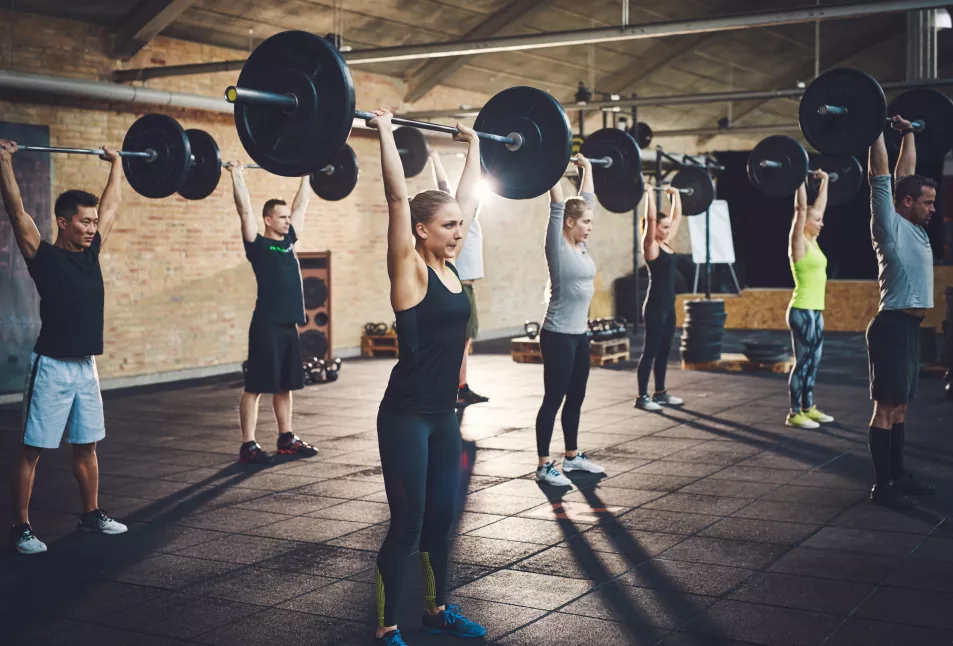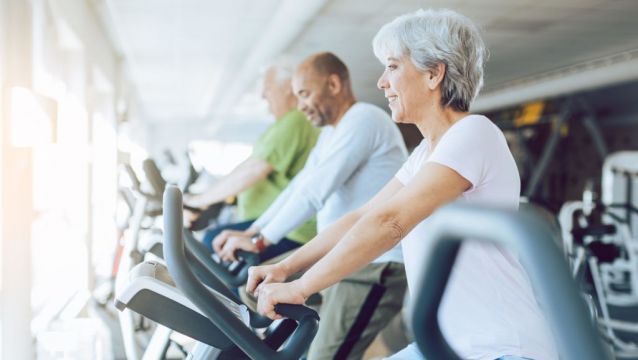Whether it’s been a while since you stepped foot in a gym or if you’re visiting for the first time this January, listening to your body is key – especially when it comes to preventing injuries.
This is true whatever your age, but is there anything specific to be aware of for certain age groups?
Check in with the pros
“If you are a member of a gym, speak to the personal trainers on site before starting a new regime; they will inevitably have some tips and exercises you could try,” says Penny Weston, fitness expert and director of Moddershall Oaks Country Spa Retreat.
“If you are planning to do exercises at home, I would recommend speaking to your GP before starting anything new or arranging to chat with a private personal trainer. There is also a lot of information available online.”
Focus on form
And form is everything for fitness and nutrition coach Rachael Sacerdoti. As well as helping protect you from injury, having good form when performing exercises means they’re more likely to do their job.
View this post on Instagram
Advertisement
“To reap the benefits and see real rewards, you have to perfect the move and ensure your form is on point. When it comes to lifting weights and using machines, your technique should be your number one concern,” says Sacerdoti.
“Lifting incorrectly will compromise your workout and can lead to serious injury. This will also knock your confidence and your enjoyment of the workout. Slow your movements down and if possible, always work-out in front of a mirror.”
Don’t skip the warm-up
Prepping your muscles accordingly with a proper warm-up is also key – along with those all-important rest days. Using a foam roller or simple mobility movements to warm the muscles and joints is simple yet highly effective, says Sacerdoti.
“Incorporate rest days to ensure you are giving your muscles enough time to recover in between workouts,” she adds. “Active recovery such as walking, stretching, and yoga is a good way to gently increase your blood flow which in turn will help rebuild the muscle.”
Pack in the protein
You might want to consider upping your protein intake too, depending on your individual needs. “It’s vital for everybody of every age, high-quality protein is an essential part of a healthy diet helping to build and repair cells, bones, muscles, and joints,” says Sacerdoti.
“Helping to prevent muscle loss, something that happens naturally as we age, an increase in your daily protein intake is imperative if you want to stay fit and strong.”
Here are some more tips from fitness experts on how to get the most out of your workout and avoid injuries at every age…
30s

In your 30s, it’s crucial to diversify your workouts with a mix of cardiovascular exercises, bodyweight movements, and flexibility exercises.
“This variety helps prevent overuse injuries and promotes overall fitness. Ensure you prioritise a thorough warm-up, incorporating dynamic stretches like leg swings and light cardio activities such as jogging or jumping jacks,” says Dr Sarah Davies, a consultant in musculoskeletal, sport and exercise medicine at The Lister Hospital, part of HCA Healthcare UK.
40s

As we reach our 40s, it’s essential to listen to our bodies and adapt our workouts accordingly. Women in particular can experience a lot of hormonal changes during this decade.
Sacerdoti suggests using a mix of resistance and cardiovascular training to maintain muscle mass and heart health. “Regular stretching exercises can also help increase flexibility and reduce the risk of muscle strains. Paying attention to post-workout recovery, such as foam rolling or gentle stretching, can go a long way in preventing injuries,” she adds.
Warm-ups are also vital here. And Andrew Watkinson, personal trainer and founder of Fitagain PT Gym and Retreats, adds: “Choose a cardio that will get the heart going and create a sweat as you build through the time. Work through a full range of dynamic mobility to ensure a full range of movement, this will prevent strain on the joints.
“When lifting, go for lower reps and lower weights. Aiming to maintain muscle strength at this age overrules heavy lifting.”
50s

For those in their 50s, focusing on flexibility becomes even more essential, alongside maintaining good core strength to help with balance and injury-prevention.
“Include static stretches for major muscle groups, engage in activities like yoga or Pilates, and consider incorporating low-impact exercises to reduce stress on joints,” says Davies. “Pay attention to any signs of discomfort and adjust your routine accordingly.”
60 plus

As our bodies naturally experience changes in our 60s and beyond, it’s crucial to remain active and mindful of our individual needs. Sacerdoti highlights low-impact activities, such as water aerobics or walking, to maintain cardiovascular health with minimal impact on joints.
“Regular strength training, albeit with lighter loads, will help maintain bone density and muscle strength. Additionally, focusing on balance exercises can aid in preventing falls and maintaining independence,” she notes.
Davies adds: “Regardless of age, always prioritise proper form in all exercises, and ensure you allow sufficient time for rest and recovery. Regular health check-ups and assessments, including bone density tests, are crucial for maintaining overall wellbeing.”







